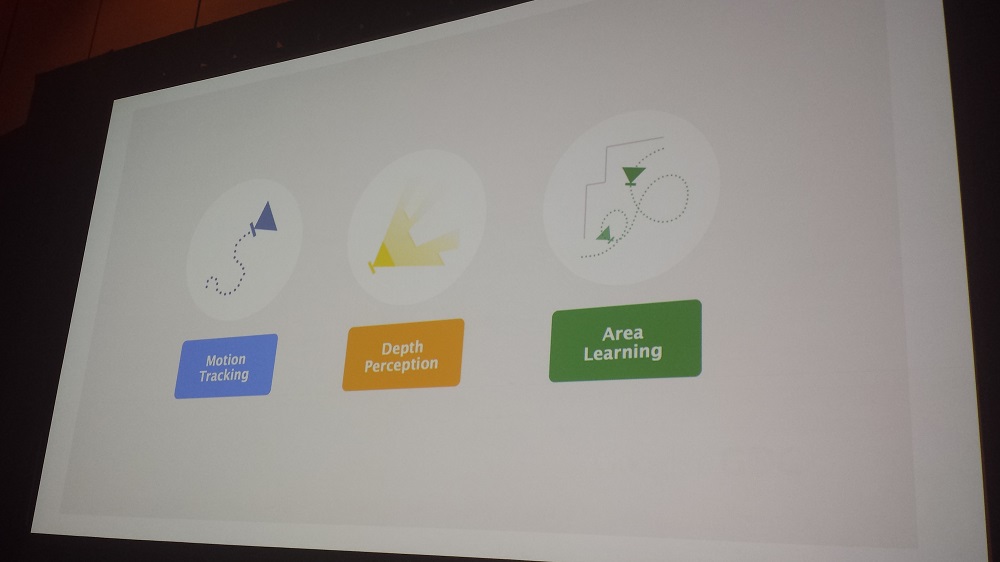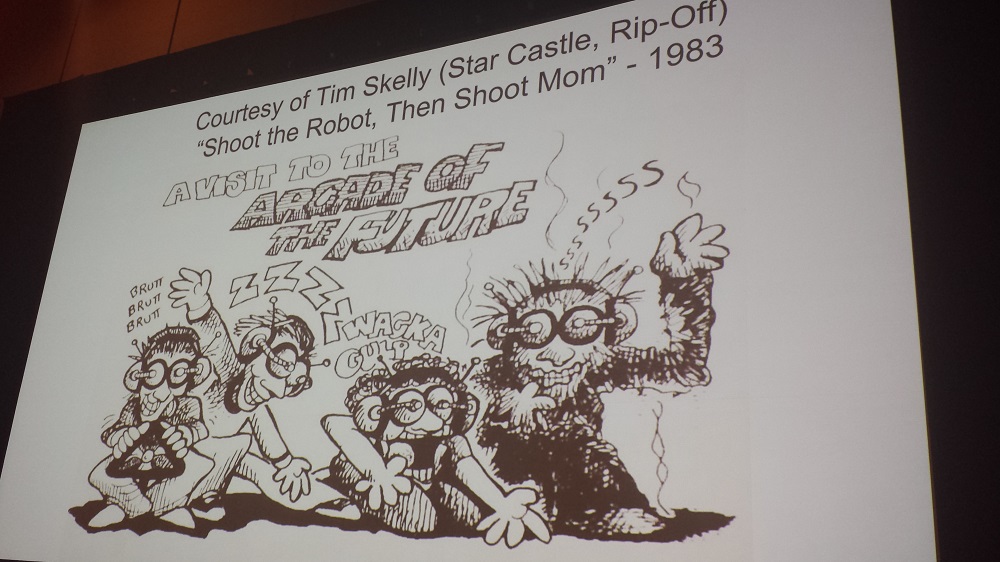Click here for all of GamesBeat’s 2015 Game Developers Conference coverage.
If transmogrified reality becomes the next wave of entertainment technology, we may all grow scared of the dark again.
During his session at the Game Developers Conference earlier in the week, Noah Falstein, chief game designer at Google, spoke on the future that is possible through the tech. He defined transmogrified reality as being the most realistic form of virtual and augmented reality conceivable through our current and emerging technologies. Advancements via Google’s own Project Tango tablet hint at titles that recreate the space around us and that might possibly provide the most visceral interactive experiences yet.
In particular, Tango’s ability to track and “learn” about the immediate area around it could prove a “magic portal” to gaming’s next plateau. In its pre-sale state, the Tango can capture a room in real time, including difficult environments full of people. The device bounces an infrared signal throughout its surrounding — similar to echolocation — orienting itself within the room and building it up from there. The tablet then effectively constructs a point-cloud database — visualized as dense clusters of small dots across surfaces — of the exact dimensions of objects and borders within an area, before rendering a final recreation of the environment. The user could then implement physics in the captured space through the game engine Unity and populate it with furniture or objects.
During a pre-recorded video demonstration, the Tango tracked a trip across a city and closely mapped the movements of a roller coaster ride. The device then captured several rooms, slowly covering a dresser and table in thousands of small, yellow dots as it built up a point-cloud database of the objects.
Potentially, designers could use the Tango (and devices like it) to create an interactive experience around the most familiar and comfortable areas of your home. Developers could transform a wide hallway in your home into a laser-grid secured level in a stealth game. A designer could place a demon around a sharp right turn leading to your kitchen or actually stick a monster under your child’s bed.
Think of this as a 360-degree version of the first-person segments that took place in the apartment during Silent Hill 4: The Room, only with your house’s exact layout. You could hear a knock at your front door and find a bloodied serial killer standing on your welcome mat when you look through the peephole.
Falstein described the experience as “play[ing] where you live.” If done right, your innocuous house could freak you out once you try on these transmogrified-reality devices. Horror-game designers have been trying to capture that kind of perpetual unease for decades.
With Google’s in-development Tango tablet and other similar devices, games could use evolving motion tracking and real-time room capture to expand existing genres to their most immersive extremes.
VentureBeat's mission is to be a digital town square for technical decision-makers to gain knowledge about transformative enterprise technology and transact. Learn More



